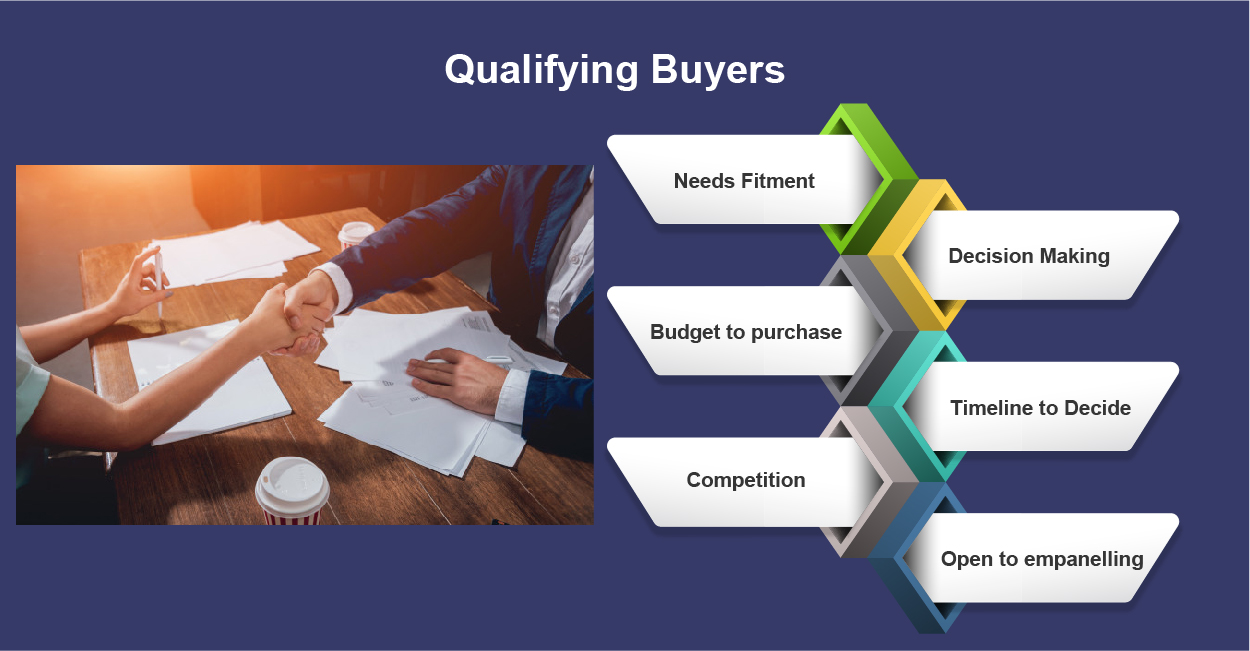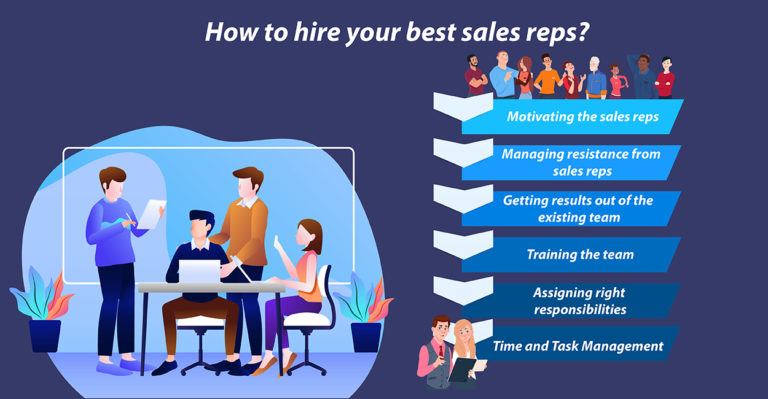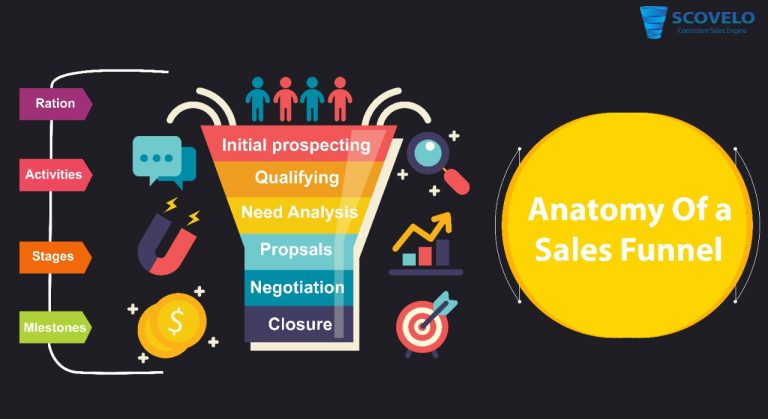What is Qualifying a Buyer?
As a salesperson, you end up meeting and interacting (Emails, Phone Calls, Social Media, Face to face meetings) with multiple buyers on a constant basis. This forms a part of the Prospecting stage of the sales process. The outcome of the meeting will range from the buyers showing a cold shoulder to asking for a presentation, custom work to do for them to make you give a proposal.
However, you know all the buyers who showed positive responses to our stimuli are not the ones who may end up buying from us. This could be due to multiple reasons. You will have to come up with a process to find out where you have a better chance to win. This will help you to spend your time with the right sets of prospects.
As you know, each one of the buyers will also be in different stages of their buying cycle.
You can’t convert all leads into a purchase because the buyers may:
Not have the budget
Have a negative opinion about you or your organization
Would also be having their choice of vendors
Like all of us, they would also like to window shop and would talk to you to learn.
You must ask a lot of questions to find out how qualified the buyer is.
Have a set of custom parameters on which you can qualify a buyer to decide your chance to win Click To Tweet
A few parameters in Qualifying Buyers would be
Needs fitment with your core offerings
A match between the buyer’s needs and your capability or service
Each buyer will be making purchases at multiple timelines based on the impending business problems that are applicable at that point of time. You may be offering only a limited set of services or a limited set of functionalities in your product.
You will need to find out what are the high impact needs of the buyer and see if there is a fitment between what they want in reference to what you have to offer as your core services.
A buyer may have multiple needs at any given point in time and will try to prioritize the ones with high impact to take decisions on those.
Decision-Making Ability
You will have to look at the decision-making level of the main stakeholder you are in touch with
You might not end up interacting or meeting with the decision maker in all sales situations. It is fine if your point of contact will a) Allow you to meet up with the decision makers at some point in time b) Will do a fair evaluation of you and will take a decision.
You might not be in a strong position if you believe that your point of contact will do neither of these.
You must have encountered at multiple places where your main point of contact will say that “I am only authorized to collect the necessary information from multiple vendors. I will forward this to my management and they will get back to you if they feel you are a right fit”. You know that this is not something that will work in your favor.
Budgets to purchase
The Budgetary approval within the organization to proceed with a purchase like this and if possible, the indication that the company can afford the kind of money that you expect in return for the product or the service to be provided to the buyer.
You have to find out if the pain point is identified as high impact. It can also be found if the pain point has been discussed within the buying organization and a decision has been taken to make a purchase within a defined timeline. You can also do a soft mention on the total cost and can also get an indication on the notional acceptance.
Timelines to decide
The timelines within which they would make the decision to buy or the timelines within which they would have to complete the project
You will get to understand the timelines to decide if the impact of the problem is high and internal decisions had been taken. You will have to call it a bit low qualified if the timelines to purchase had not been decided.
Impact of the pain point
The impact that your product or service will have within the buying organization once the purchase is done. The above-discussed points (4 and 5) will clearly happen if the problem is identified as high impact. A Higher impact on the business will mean that the purchase will be done sooner and a lower impact will mean that the purchase may happen at a later stage or may not happen at all
Competition
The competition you are up against. Is the competition a company that has a potential disadvantage compared with you? The companies that would compete with you will be from a wide range. There is a good chance that the existing vendors will be a part of the evaluation set.
Based on the past experiences of the buyer, they might spend a lot of time in evaluating multiple competitors and freeze on the final three or four where all of you might be on similar levels.
Openness to empanelling new vendors
The Openness the buying organization has in empaneling new vendors. All your efforts will go waste if they cannot empanel you. Your buyers will go through a block in the final stage when they would.
The purchase department will ask the other buyers on why they should empanel you (a new vendor) when they have quite a bunch of empaneled vendors that can do a similar job at a comparable price. You are at a better chance to win if you offer something unique that other companies don’t.
The entire process of qualifying can be accomplished by asking a set of carefully worded questions. The buyers may hold information or choose not to respond if the questions are perceived to be intrusive to them
Not qualifying a buyer or a prospect will help you in not having false positives. This will also help the sales person in providing the right type of information to help them take a decision. This will help us in two ways – one is building a positive image with the buyers as they will like us for the contextual information we would give them and this will also help us in not wasting our time in producing enormous custom content to the unqualified buyers hoping that they will give us business somehow.
Vist our Sales Presentation Training Service
Visit our youtube channel to get more insight on B2B sales and on digital marketing



















